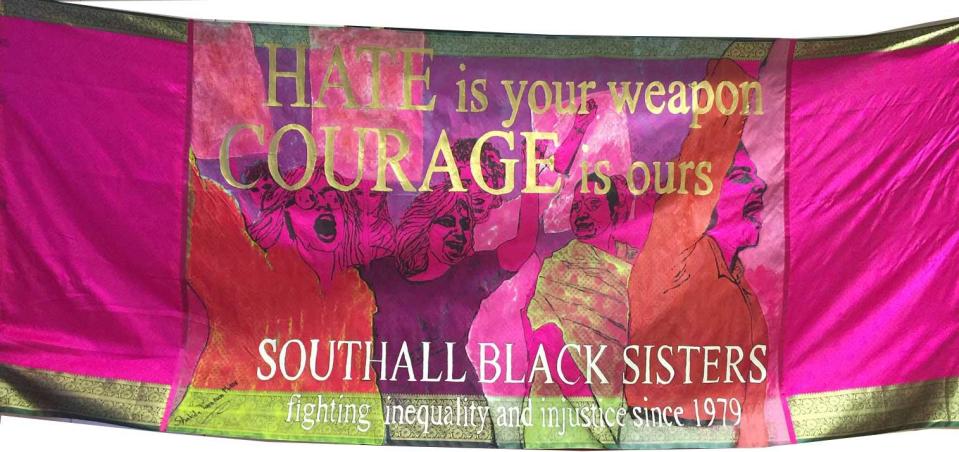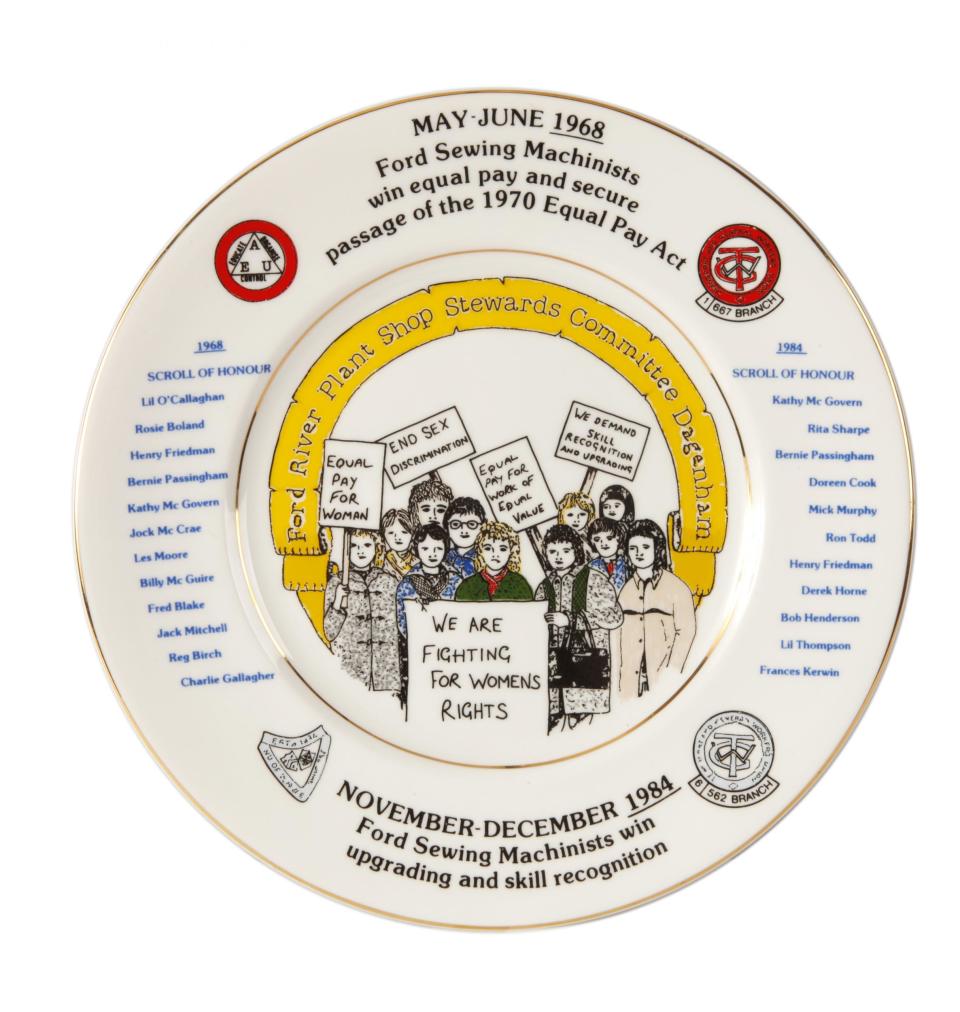British Library's Unfinished Business exhibition: Six defining London moments from the history of women's rights

Have you heard the one about the woman who took a 30-minute break from the feminist struggle to watch a TV show? It’s probably fair to say that the fight for women’s rights has been rather time-consuming, and after many years, it’s still not over.
A major new exhibition at the British Library, opening this week, explores key moments in the battle against inequality. Unfinished Business: The Fight for Women’s Rights celebrates key figures, from the first woman to go to Oxford University to the instigator of the No More Page 3 campaign, but it also examines how inequality is experienced differently across race and class.
It couldn't feel more timely in the year of the coronavirus pandemic and the re-eruption of the Black Lives Matter movement. Dr Debbie Cox, one of the exhibition’s curators, says that it is more resonant than ever. “We’ve seen the importance of key workers, that women who work in care or the health service who have often been undervalued, are so significant. We have also seen that black and minority ethnic communities have suffered disproportionately from coronavirus, partly because of social factors like housing and the work they do.”
It shows “how much history matters, the importance of institutions reinterpreting the past and looking again at the histories we think we know and seeing them differently,” says Dr Cox.
And London has been the site of many significant moments in Britain's feminist history. Here, we look at a selection of objects from the exhibition from across the capital, as chosen and explained by Dr Cox.
Peitaw by Khadija Saye

“Khadija was born and lived in London, and she tragically died in the Grenfell Tower fire. She’s important because this is how she chose to represent herself. It's full of meaning: she is showing the relationship between the physical representation of the body and black history in response to trauma, but also looking at spirituality. We wanted to show that gender inequality is experienced differently, according to race and class and other factors. And she symbolies this in the sense that people in Grenfell Tower were ignored, their voices were not heard and we needed to give voice back to her through recognizing her work. Later in the year, we’ll also be showing the full set of silkscreen images that are part of the series."
Southall Black Sisters' banner, designed by Shakila Taranum Maan

“This banner is spectacularly colourful and it's printed on sari fabric. The Southall Black Sisters were established in 1979, and they have campaigned against violence against women and supported Black, Asian and Caribbean women who are victims of domestic violence. They’ve campaigned for changes in the law to help free women from domestic violence, and they continue to do that.
“At the moment the Domestic Abuse Bill says migrant women don't have recourse to public funds and cannot access support from refuges that are publicly funded, and that's one of the things that Southall Black Sisters are campaigning on. This ties in with the theme of the exhibition, that we're looking both at the history of women's activism and the relevance of social activism to the present, the way that current campaigns are rooted in the long history of activism.”
A commemorative plate celebrating the success of the Ford Dagenham sewing machinist protests

“This plate was produced 1985 and its marks the completion of the 17-year struggle for recognition for the sewing machinists at Ford Dagenham plant to be recognised as skilled workers. The dispute began when they were downgraded from semi-skilled workers to non-skilled workers and were being paid less than men, and they went out on strike for three weeks. That strike was a catalyst, with the help of Barbara Castle (then Secretary of State for Employment and Productivity under Harold Wilson's Labour government), for the Equal Pay Act in 1970. But it still didn't bring a conclusion; they got a pay rise, but they weren't recognised as skilled. And it took until 1984, and a longer strike, before they gained skilled status, so this is a key point in labour history.”
Princess Sophia Duleep Singh’s police surveillance records

“Sophia Duleep Singh will be a familiar figure to many people because she appeared on a stamp, and the picture of her selling the suffrage newspaper, Votes For Women, is in wide circulation. But we've chosen to look at a different aspect – we've drawn on materials that document the surveillance that she was under. She was on good terms with Queen Victoria as her goddaughter and she lived in Hampton Court in a grace-and-favour flat. And because she was close to Queen Victoria, the authorities couldn't actually prevent her campaigning, they couldn't arrest her or imprison her way that they could offer suffrage campaigners, but she was under close surveillance, and particularly when she also linked her political activism, campaigning for women's suffrage, with the struggle for Indian independence. These records are basically saying ‘how are we going to stop this woman? We see her as a threat and a nuisance’."
An issue of Achilles Heel

“Achilles Heel were based in London, and the magazine itself came about after the London Men's Conference in 1978. A collective group of men split from the women they had been working with, because the women wanted to work separately and they became the Women's Therapy Centre. But the men also wanted to continue to work to look at their role in supporting women, as men, to look at how they could redefine masculinity, and move away from feeling individually guilty about women's situation to actually do something positive collectively. So the title indicates a point of vulnerability - that they sought to share their vulnerabilities, so that they could actually use that to make change. And it went on for quite a long time - they put out 24 issues, one issue a year. Each issue had a theme like family or work, but also things like anger or fear. Why it’s important is that it's not only down to women to change their status, it also means men's partnership, a redefinition of the relationship between men and women.”
Camden Black Sisters booklet celebrating the life of Claudia Jones

“Camden Black Sisters were a group that were based in Kentish Town, which was where Claudia Jones lived. They wanted to work to support women in their local area but also recover the history of women who have made an impact, and one of those was Claudia Jones. She has been an inspirational figure within the black community and particularly for black women. She's sometimes referred to as the founder of Notting Hill carnival because she established the Caribbean Carnival, which was first held at St Pancras Town Hall. It was held indoors, the first six occasions. She was also an intellectual, a journalist and a newspaper editor. She established the West Indian Gazette, which was the first black community newspaper to actually be sold at newsstands. She died quite young but she did a tremendous amount - she had a huge energy and was the creator of things.”
Unfinished Business: The Fight for Women's Rights runs at the British Library from Fri 23 Oct 2020 to Wed 24 Feb 2021; bl.uk

 Yahoo News
Yahoo News 